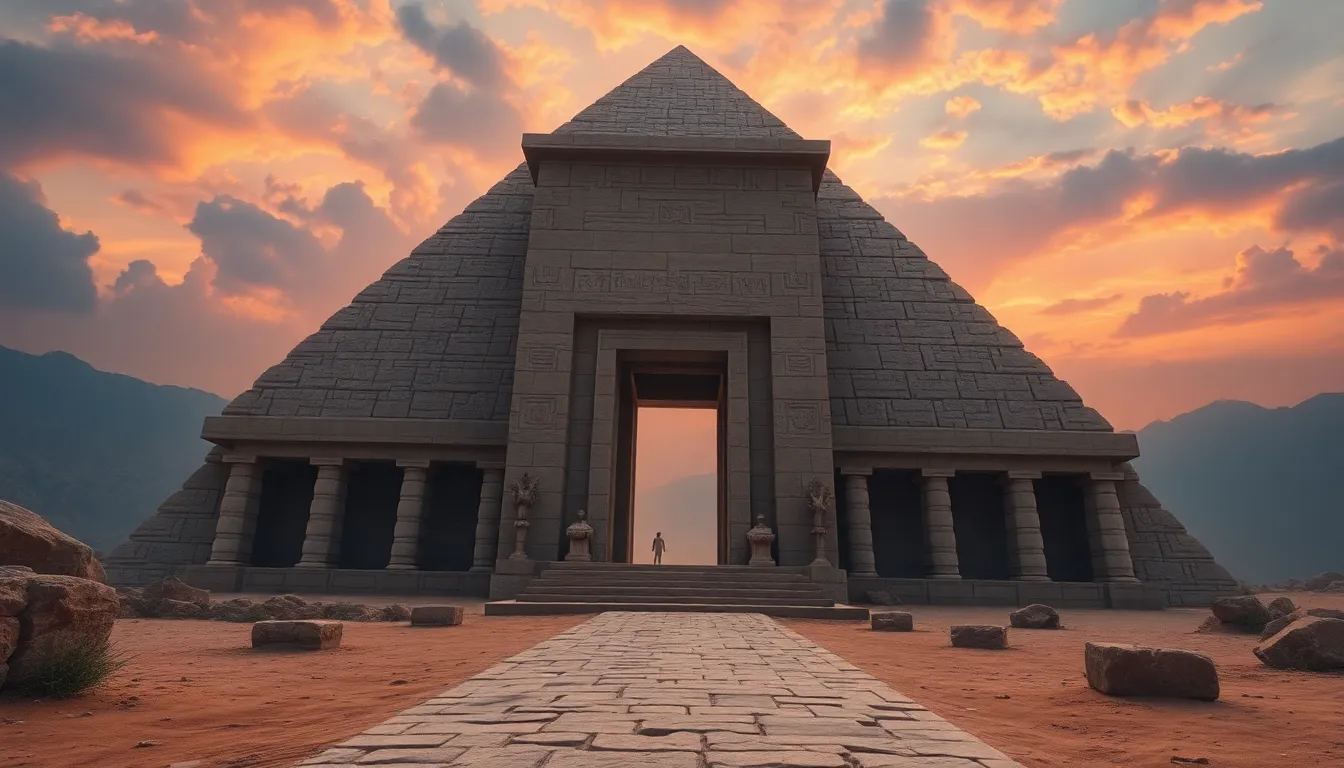The Myth of the Sacred Path: The Journey to the Afterlife
I. Introduction
The concept of the sacred path is deeply ingrained in many cultures, representing the journey that souls undertake after death. This path is often depicted as a metaphorical bridge between the physical world and the spiritual realm, guiding the departed towards their ultimate destination.
The afterlife holds significant importance in various cultures, serving as a source of hope, fear, and moral guidance. It shapes the way societies understand life, death, and the transition between the two. For instance, the Egyptians believed in a detailed process of judgment and resurrection, while the Greeks envisioned a realm of shadows and spirits.
This article aims to explore the myths and beliefs surrounding the journey to the afterlife, examining how different cultures interpret the sacred path and the implications these beliefs have on their practices and worldviews.
II. Historical Perspectives on Afterlife Beliefs
Throughout history, different civilizations have developed unique perspectives on the afterlife. Here, we take an overview of some key ancient cultures:
- Egyptians: The ancient Egyptians held a complex belief system involving the judgment of the soul by Osiris and the weighing of the heart against a feather.
- Greeks: The Greeks believed in a duality of existence with realms like Elysium for the virtuous and Tartarus for the wicked.
- Mayans: The Mayans saw the afterlife as a continuation of life, where the souls journeyed through the underworld before reaching paradise.
As these beliefs evolved, common themes emerged across cultures, such as the importance of moral conduct in life, the existence of a judgment phase, and the concept of an eternal resting place or rebirth.
III. The Sacred Path in Different Cultures
Examining specific cultural beliefs about the afterlife reveals a rich tapestry of mythology and tradition:
A. Eastern Philosophies
- Hinduism: The sacred path is represented through the cycle of samsara, where souls are reborn based on karma until they achieve moksha, or liberation.
- Buddhism: Similar to Hindu beliefs, Buddhism emphasizes the cycle of birth and rebirth (reincarnation) and the attainment of Nirvana as the ultimate escape from suffering.
B. Western Religions
- Christianity: The journey often involves a belief in heaven and hell, where one’s faith and actions determine their eternal fate.
- Islam: In Islam, the afterlife is viewed as a continuation of life, where one is rewarded or punished based on their deeds as judged by Allah.
In these traditions, the sacred path is laden with symbolism, often represented by rivers, mountains, or bridges, signifying the transition from the material world to the spiritual domain. Rituals such as funerals, prayers, and offerings are integral to these beliefs, serving to guide and honor the deceased on their journey.
IV. The Role of Myths and Legends
Myths play a crucial role in shaping beliefs about the afterlife, serving as narratives that provide meaning and context:
- Creation Myths: Stories that explain the origins of life and the universe often include elements of the afterlife, embedding the concept within the cultural identity.
- Heroic Journeys: Legends of heroes venturing into the underworld, such as Orpheus in Greek mythology, illustrate the challenges and trials faced on the sacred path.
These narratives not only reflect cultural values and fears but also influence the rituals and practices surrounding death and mourning, connecting the living with the departed.
V. Psychological Interpretations of the Afterlife Journey
The psychological significance of the sacred path cannot be overlooked. Many individuals find comfort in the belief of an afterlife, which can serve as a coping mechanism for dealing with mortality:
- Existential Assurance: The idea of a life after death provides a sense of purpose and continuity, alleviating fears of non-existence.
- Community and Support: Shared beliefs about the afterlife foster community ties and support systems during times of loss.
Research suggests that belief in an afterlife can positively impact mental health, providing individuals with hope and resilience in the face of life’s challenges.
VI. Debunking the Myths: A Modern Perspective
In contemporary society, scientific viewpoints challenge traditional beliefs about the afterlife and consciousness:
- Scientific Inquiry: Advances in neuroscience and psychology offer explanations for experiences often attributed to the afterlife, such as near-death experiences and hallucinations.
- Secularism Rise: The growing influence of secularism has led to a decline in belief in traditional afterlife narratives, prompting discussions on morality and existence without the framework of religion.
Despite these challenges, the sacred path remains relevant, as individuals continue to seek meaning and understanding in their lives and beyond.
VII. Personal Experiences and Testimonies
Anecdotes from individuals who have had near-death experiences offer fascinating insights into personal beliefs about the afterlife:
- Near-Death Experiences: Many report sensations of peace, light, and encounters with deceased loved ones, aligning with various cultural beliefs.
- Cultural Variations: While some experiences resonate with specific religious teachings, others reflect unique personal interpretations.
These testimonies often challenge or reinforce traditional beliefs, illustrating the diverse landscape of afterlife perceptions.
VIII. Conclusion
In summary, the journey to the afterlife, encapsulated by the sacred path, is a complex interplay of cultural beliefs, myths, and psychological factors. Understanding these elements enriches our appreciation of human experience and the quest for meaning beyond mortality.
As we reflect on the significance of the sacred path, it becomes evident that despite differing beliefs, humanity shares a common desire to navigate the mysteries of existence and the journey that awaits us all.
Ultimately, this exploration serves as a reminder of the ongoing quest for significance in the face of life’s greatest mystery: death.




